Indonesian Marine Protected Areas: Protection and Preservation of Natural Wealth
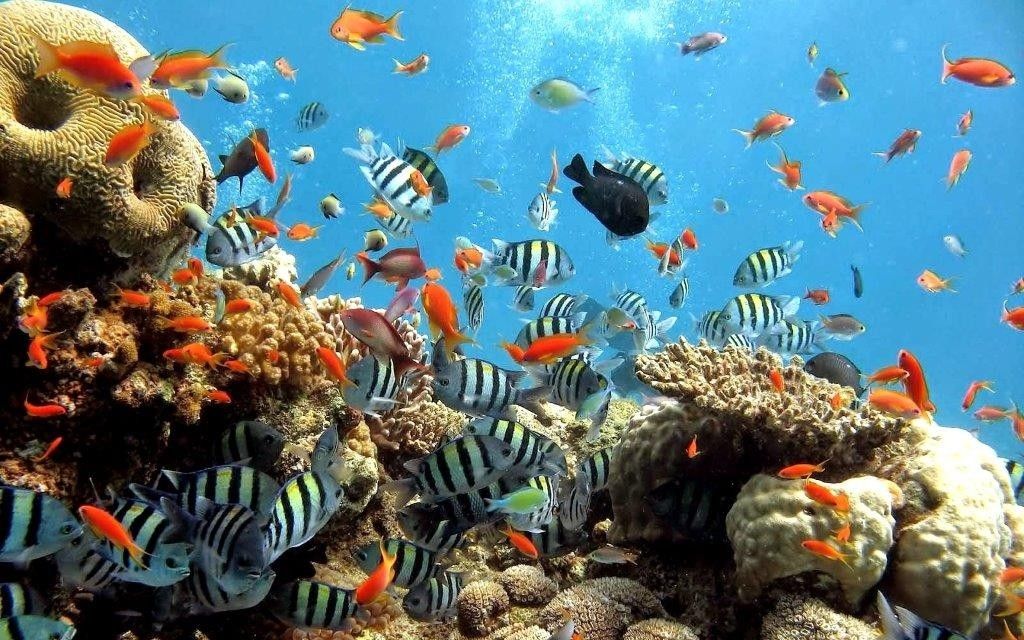
Bunaken Marine National Park (Photo Credit : Indonesia Destinations)
Indonesia, with more than 17,000 islands spanning from Sabang to Merauke, boasts exceptionally high marine biodiversity. From colorful corals that host thousands of fish species to mangrove forests that sustain life, Indonesia's marine natural wealth is a global heritage that must be preserved.
Marine protected areas in Indonesia encompass various types, including National Parks, Nature Reserves, and Wildlife Reserves, both on land and at sea. Each type has distinct regulations and conservation goals, all aiming to protect and conserve biodiversity, including marine biodiversity.
Marine National Parks
Marine National Parks have a very important role in efforts to protect and preserve marine biodiversity in Indonesia. Marine National Park is a major bulwark in protecting marine biodiversity and maintaining healthy and sustainable ecosystems. The designation of Marine National Park aims to ensure the protection and preservation of marine biodiversity as well as maintain the balance of nature, with a long-term vision to ensure the sustainability of natural resources for future generations.
Law Number 5 of 1990 concerning the Conservation of Biological Natural Resources and their Ecosystems is the legal basis governing the establishment and management of Marine National Parks in Indonesia. This law provides a strong legal foundation for the government in establishing, managing, and maintaining Marine National Parks. In addition, the Ministry of Environment and Forestry also issued more detailed implementing regulations and technical guidelines to regulate aspects of Marine National Park management.
With clear laws and regulations, Marine National Parks in Indonesia are run with a structured and sustainable management system. Through a holistic approach, Marine National Park not only protects marine biodiversity and coral reef ecosystems, but also plays a role in education, research, and preservation of marine natural sustainability. This allows the public and visitors to understand the importance of marine sustainability and get involved in its conservation efforts.
Through the establishment and management of Marine National Parks, Indonesia is committed to securing the country's marine future by preserving marine nature, protecting endangered species, and ensuring healthy and sustainable marine ecosystems for future generations.
Examples of Marine National Park in Indonesia:
- Bunaken Marine National Park which is located in the north of Sulawesi Island, Bunaken Marine National Park is one of the world's famous diving destinations. This Marine National Park protects a rich coral reef ecosystem, with high biodiversity including thousands of species of fish and beautiful coral reefs.
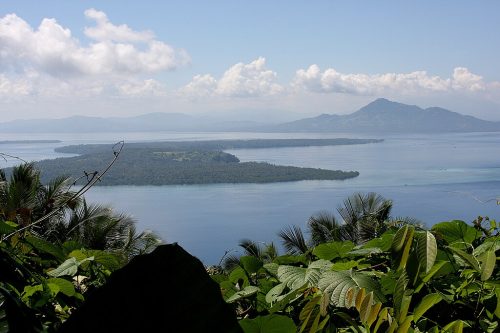
Bunaken National Park (Photo Credit : Btv70)
- Wakatobi Marine National Park which is located in the Wakatobi Islands, Southeast Sulawesi, Wakatobi Marine National Park is one of the popular diving tourism destinations. This Marine National Park protects beautiful coral reefs and is home to diverse marine species, including reef fish, turtles, and marine mammals.

Wakatobi National Park (Photo Credit : Roselinde)
- Teluk Cendrawasih Marine National Park which is famous for the presence of whale sharks.
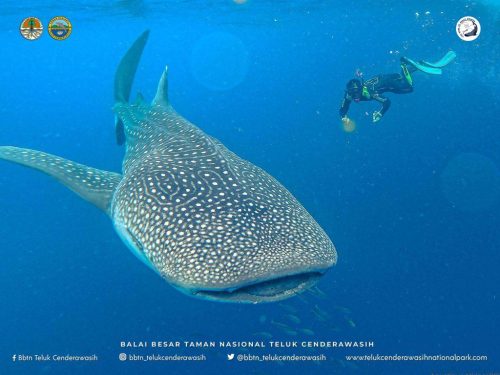
Teluk Cendrawasih National Park (Photo Credit : Balai Besar Taman Nasional Teluk Cendrawasih)
- Thousand Islands National Park which is a green oasis in the middle of the hustle and bustle of the capital city.
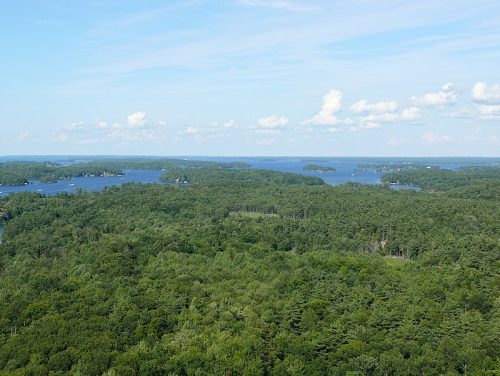
Thousand Islands National Park (Photo Credit : Ad Meskens)
Nature Reserves
Nature Reserves are designated conservation areas, including marine areas, aimed at protecting vital ecosystems and their contained biodiversity. The main purpose of establishing marine reserves is to ensure the preservation of rare or endangered marine species, as well as maintain the harmony of marine ecosystems. Marine Nature Reserves can also serve as natural laboratories for research and education.
The regulation governing the establishment and management of marine reserves in Indonesia is the Regulation of the Minister of Environment and Forestry (LHK) of the Republic of Indonesia Number P.20/MENLHK/SETJEN/KUM.1/9/2018 concerning the Establishment of Nature Reserves. This regulation provides a legal basis and guidance for local governments and related agencies in the management of marine reserves.
Examples of Marine Reserves in Indonesia:
- Karimata Islands Marine Reserve
The Karimata Islands Marine Reserve is located in the western waters of Borneo Island, Indonesia. This area includes a number of islands scattered around the waters of the Java Sea and Natuna Sea. This nature reserve was established by the Indonesian government as an effort to protect unique marine life and preserve its preservation.
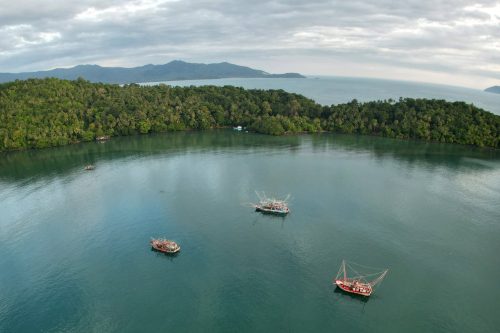
Karimata Islands Marine Reserve (Photo Credit : Roni Bia Santo)
The Karimata Islands have incredible biodiversity. Within, there are various species of rare and protected marine animals, such as swallows, seagulls, and sea turtles. In addition, the waters around Karimata are a habitat for various species of fish, including grouper, stingrays, and red snapper. Beautiful coral reefs are also an attraction for divers and lovers of underwater nature.
- Anak Krakatau Marine Reserve
Anak Krakatau Marine Reserve is located in the Sunda Strait, between Java and Sumatra. This nature reserve is around an active volcano called Anak Krakatau, which is a volcanic cone formed after the devastating eruption of Mount Krakatau in 1883. The reserve was established to protect the unique marine flora and fauna surrounding the volcano.
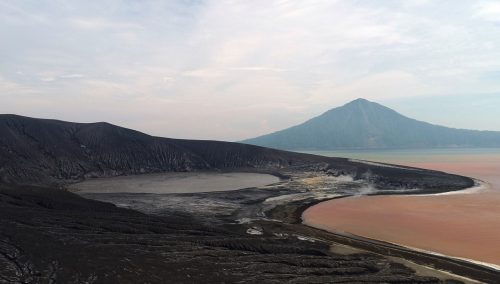
Anak Krakatau Marine Reserve (Photo Credit : KSDAE)
Anak Krakatau Marine Nature Reserve is famous for its underwater beauty. The coral reefs that thrive around this volcanic island attract divers and nature lovers. Inside, visitors can encounter various species of reef fish, active coral reefs, and amazing marine life. However, keep in mind that Anak Krakatau's volcanic activity can have an impact on the condition and accessibility of this nature reserve, so it is necessary to follow the instructions and regulations set by the authorities.
Wildlife Reserves
In Indonesia, there are about 75 Wildlife Reserve locations covering land and sea reserves, with a total area of nearly 5.5 million hectares. Each of these wildlife Reserve has distinctive animals that live in them. Wildlife Reserves have an important role in maintaining biodiversity and maintaining healthy ecosystems. One of its main goals is animal conservation. Within wildlife reserves, rare, endangered, and high ecological value species are protected and conserved. This helps maintain the continuity of marine animal populations and prevent species extinction. In addition, wildlife reserves are also important places for education and research. Communities and researchers can study the biodiversity, natural resources, and ecosystems that exist in wildlife reserves. The research conducted provides a deeper understanding of life and provides important information for better management in the future.
An Example of Wildlife Reserve in Indonesia:
- Muara Angke Wildlife Reserve
Muara Angke Wildlife Reserve is located in DKI Jakarta and has an area of about 25.02 hectares. This area was designated as a wildlife sanctuary through the Decree of the Minister of Forestry of the Republic of Indonesia Number 097/Kpts-II/1988, issued on February 29, 1988.
Muara Angke Wildlife Reserve is famous for the diversity of fish that live in it. The area is an important habitat for various species of freshwater and brackish water fish. Some examples of fish that can be found in this wildlife sanctuary include snakehead fish, toman fish, belida fish, betok fish, and many more.
In addition to being a place to live for fish, Muara Angke also has an ecosystem that supports the existence of birds and other aquatic biota. The area is a shelter and nest for various species of birds, including waterbirds such as seagulls, cranes, and hornbills. In addition, in Muara Angke there are also mangroves that provide an important ecosystem for aquatic life and protection against coastal abrasion.
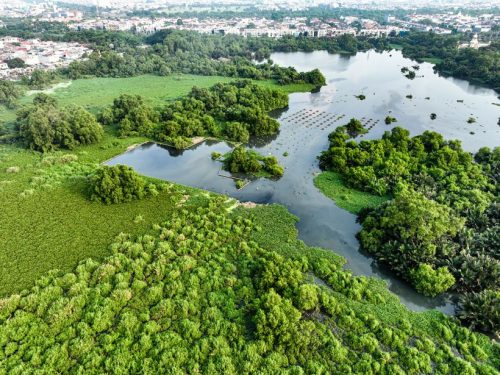
Muara Angke Wildlife Reserve (Photo Credit : Dzimar Prakoso/YKAN)
Marine protected areas in Indonesia have a very important role in efforts to protect and preserve natural resources in Indonesian waters. With the existence of marine protected areas, such as National Parks, Nature Reserves and Wildlife Reserves, Indonesia is committed to maintaining marine biodiversity, maintaining healthy ecosystems, and protecting rare or endangered species. Through clear regulations and management systems, marine protected areas in Indonesia play a role in education, research, and preservation of marine natural sustainability. Thus, Indonesia's marine protected areas are a real effort in protecting and preserving the country's marine natural wealth.

